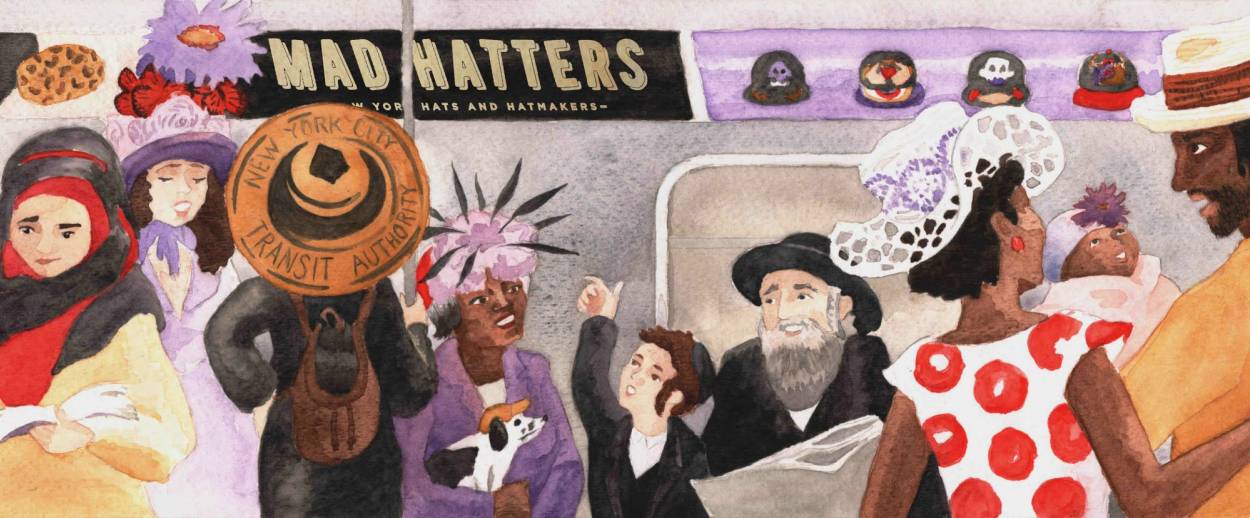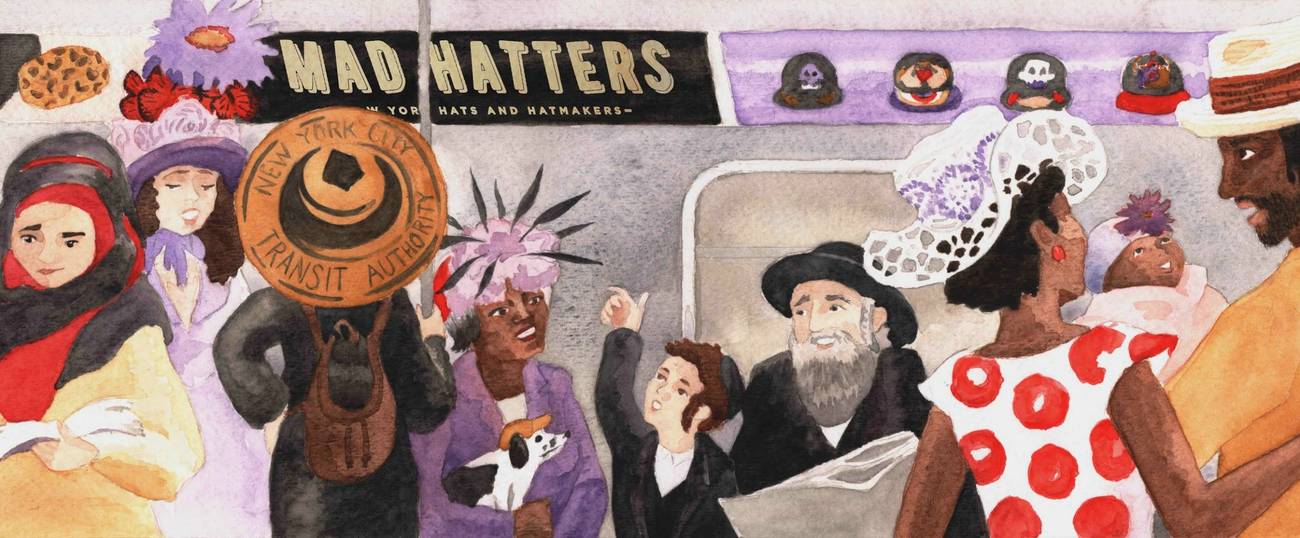An Art Show Offers a Colorful History of New York City in Hats
A look at the history, culture and creativity of millinery in the city—and its Jewish representation




Through July 31, City Lore Gallery on East First Street is a veritable Easter Parade.
Maybe that’s not the best description, since Muslim and Jewish headwear is represented as well as Christian finery. The show “Mad Hatters: New York Hats and Hatmakers” is practically a survey of identity as expressed in plumage. Hats tell the world who we are, say curators Abby Ronner and Tom van Buren. They quote Frank Sinatra, who once said, “Cock your hat; angles are attitude.” (Sinatra secretly had his signature fedoras made with shorter brims than usual, thinking they made him look taller.)
Back in the ‘50s and earlier, of course, everyone wore hats. Among the vintage hats featured in the show are a fireman’s hat and nurse’s hat from millinery historian Judith Schwartz; they reflect her working-class Jewish origins in Queens. “My father wanted to be a teacher, but during the Depression there were no jobs,” she notes in a wall card. “So he became a fireman. My mom was a nurse, and in those days nurses wore these folded white cloths for their caps. It was always my job to iron my mother’s cap, fold and button it up.” There’s also an old hat-shaped wooden promotional sign for the United Hatters, Cap & Millinery Workers International Union, urging shoppers to look for the union label.
In our post-JFK, post-salon-set-and-spray world, hats are so much more rare; as a result, they speak more loudly. Today almost every hat makes a religious, cultural, or fashion statement. The show features “church hats” by CJ Lewis of Cejunel Hats on Gun Hill Road in the Bronx, hijabs worn by women of Afghani and Iranian heritage, snazzy little decorated porkpie hats belonging to spoken-word poet Bob Holman, elegant shul-worthy ribbon-and-feather adorned cloches and berets from Hats by Rivka. They reflect the sartorial and cultural diversity of New York City.
There are also art hats, including several amusing huge-brimmed, brightly painted straw hats by Elaine Norman, influenced by the Easter Parade on Fifth Avenue. One looks like a giant old-fashioned subway token. Another is festooned with images of familiar late-night neon signs in the city: Katz’s Deli, Nathan’s Famous, Fanelli Café. Still another depicts a detail from the Tiffany clock atop Grand Central Terminal, and the celestial ceiling inside. Linda Ashton, the former president of NYC’s Milliners Guild, is also represented: Among her works is a tribute hat to the 17th century Jews of New Amsterdam. It has a large square buckle, tall crown and wide brim … but it has been spun as high fashion: rendered in white wool, with a brim made of delicate black lace and a flamboyant, hot-pink taffeta ribbon under the sober buckle.
Marjorie Ingall is a former columnist for Tablet, the author of Mamaleh Knows Best, and a frequent contributor to the New York Times Book Review.